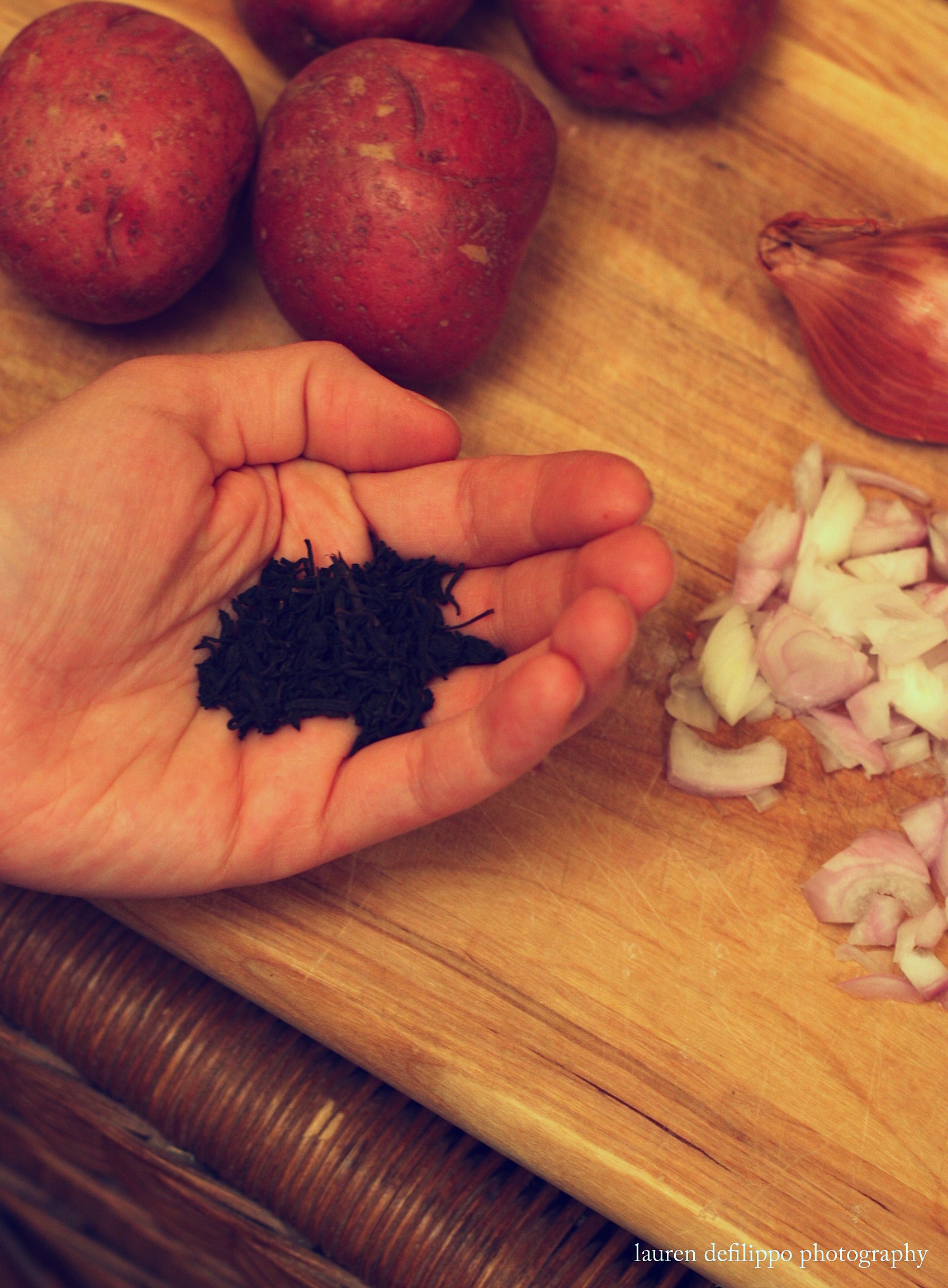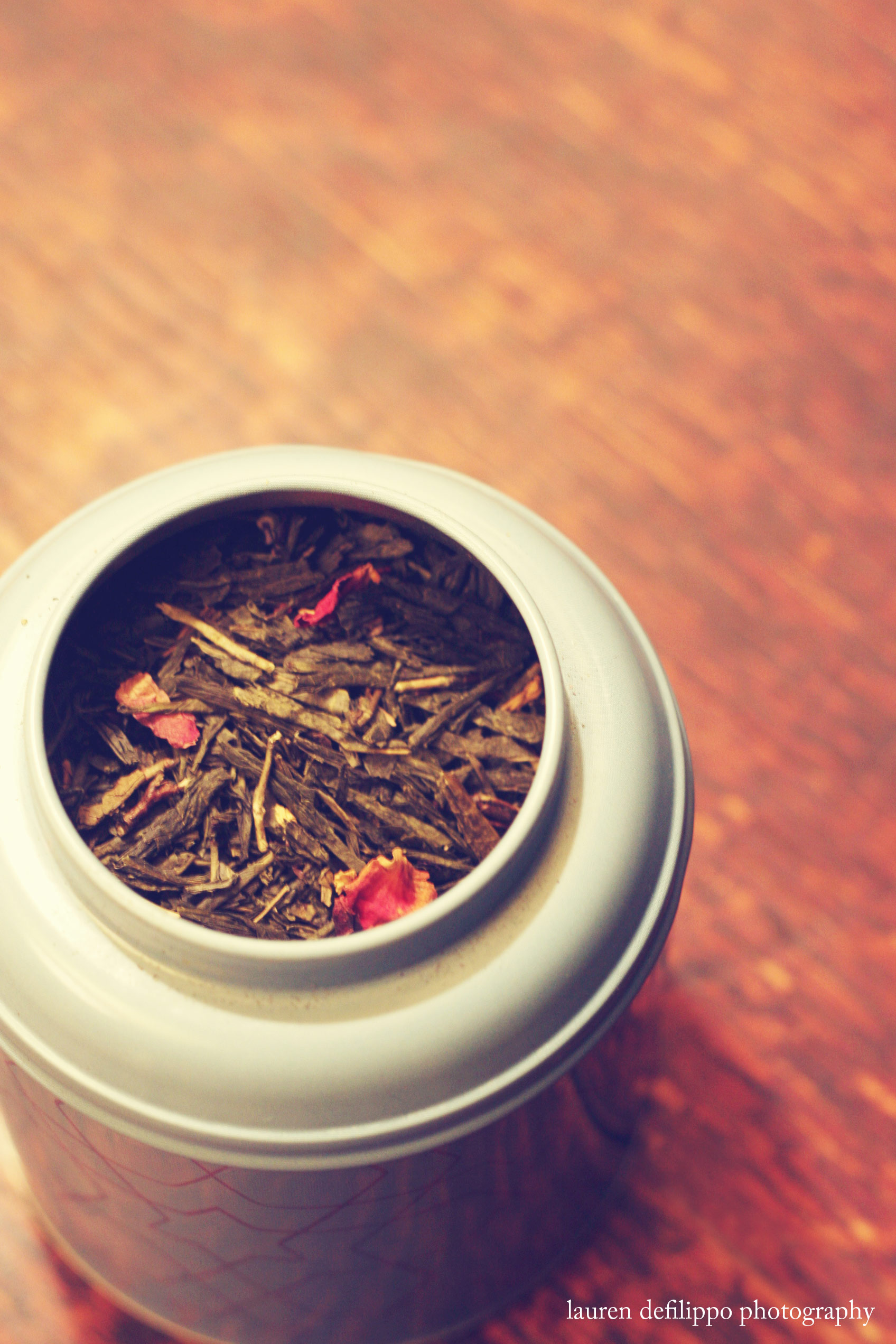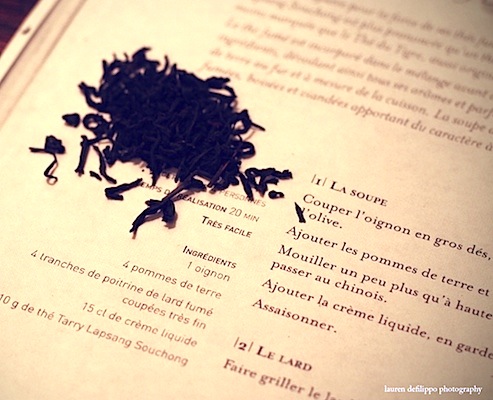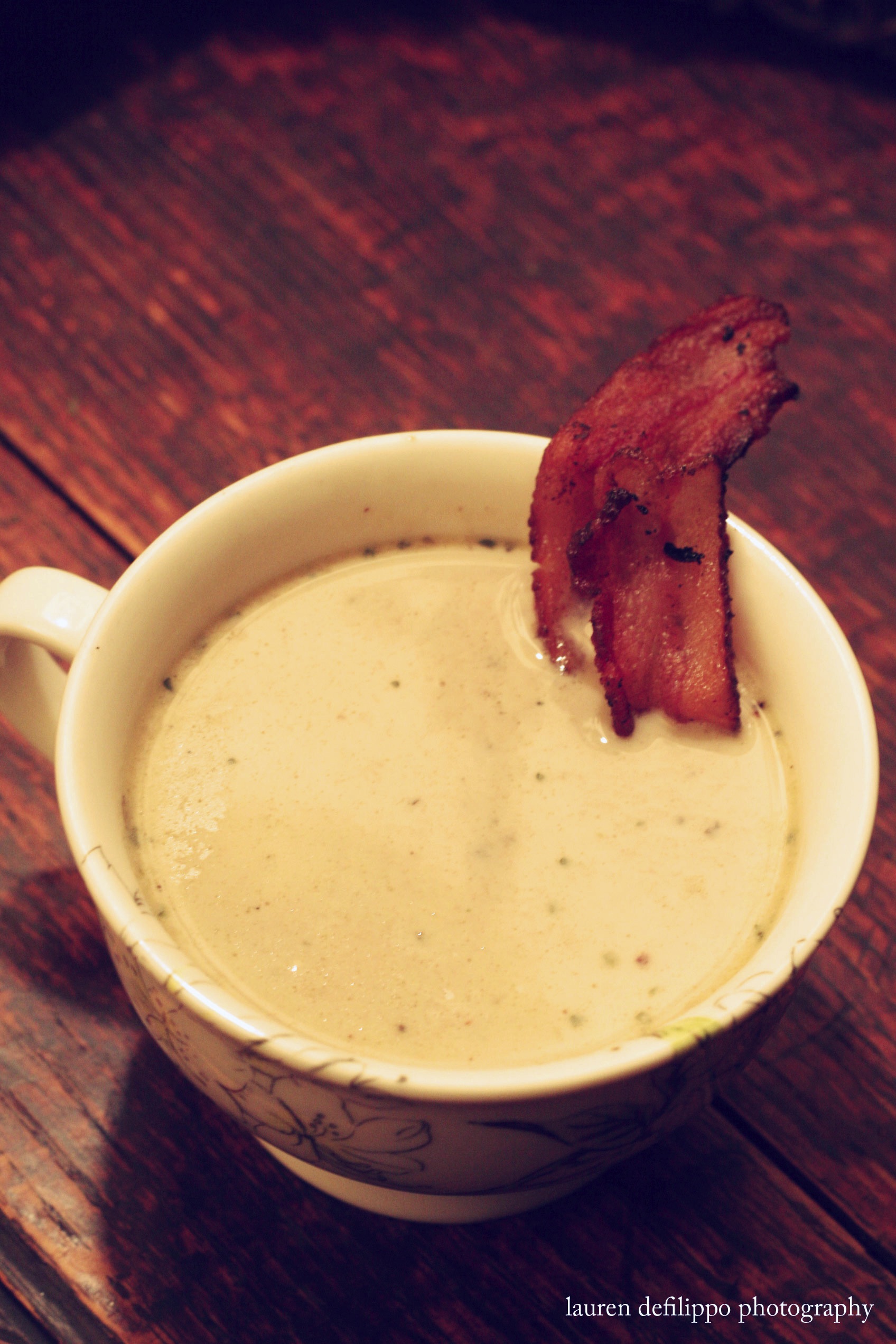Among the many health-based food experiments I've embarked on, going vegan never really appealed to me. Quite simply, I've teetered on the edge of anemia my whole life, no matter how much meat I eat, so a strictly vegan diet always seemed like a recipe for disaster. That said, I have a great respect for vegetable-focused, clean eating, so I enjoy experimenting with vegan recipes from time to time.
In any case, this recipe didn't begin with any dietary ambitions. As with most things in my kitchen, it came from a desire to use the ingredients in my pantry in the most intelligent, no-waste way possible. So when I realized I had both a fresh head of cauliflower and 2 cups of frozen leeks (whenever I find leeks that are particularly long, white and lean I buy, chop and freeze them for future use), I suspected I might find a recipe to use both.
Cue Love & Lemons, whose roasted cauliflower and leek soup was already happily hanging out on my "soups + stews" Pinterest board. Chop, season, roast and blend—it was clearly my kind of no-fuss, one-pan/one-pot cooking. Based on the ingredients in my own pantry, I swapped in walnuts for the cashews and homemade preserved lemon for the fresh lemon. And, of course, I did my own thing as far as measurements because that's the joy of savory cooking.
And when it was all over...I was less than impressed. The robust flavor I had been expecting just didn't seem to have shown up at the party. But, of course, I was going to eat the soup for lunch all week, because that's what responsible cooks do. Then...the next day when I heated the soup up for lunch, something magical happened. There was bold cheesy flavor in my soup. Overnight, in the fridge, the complexity of this concoction had mysteriously turned up the funk about ten notches. At that moment, I finally understood how some people could get addicted to nut-based, vegan cheese—though I suspect the paprika is also a key player in the funkification of the recipe below. (Please note: This changes nothing in my dairy life. I am a loyal, near-daily consumer of yogurt and unpasteurized cheeses.)
Anyway, here's my take on the recipe:
surprisingly Vegan Cauliflower Soup
Ingredients
- 1.5-2 cups leeks, chopped
- one head cauliflower, broken into florets (I also included the stalk + leaves)
- 2-3 cloves garlic
- 1-2 tbsp grapedseed (or other high heat) oil
- pinch aleppo pepper
- 2 pinches dried thyme
- pinch salt
- roughly 4 cups water
- 1-1.5 cups walnuts, pre-soaked (I soaked them for about 1.5 hours)
- 1 quarter of a preserved lemon
- 1/4 cup olive oil
- 1 tbsp smoked paprika
Instructions
- Toss chopped leeks, garlic and cauliflower in a small amount of grape seed or other high-heat appropriate oil. Sprinkle with thyme, aleppo pepper and a generous pinch of salt. Roast at 375 degrees for about 40 minutes (until golden). **If you haven't soaked your walnuts yet, do it now in hot water.
- Remove roasted vegetables from oven and add to a large pot with about 3 cups of water, soaked walnuts, preserved lemon, smoked paprika and olive oil. Use an immersion blender to break down until creamy. Add more water, as necessary, to achieve a thinner, soup-like consistency.
- Once soup is pureed, gently heat through and puree again to achieve an even smoother consistency.
- Refrigerate overnight and reheat when ready to serve.
Note: You will need either a very powerful immersion blender or a Vitamix for this soup to be successful.





